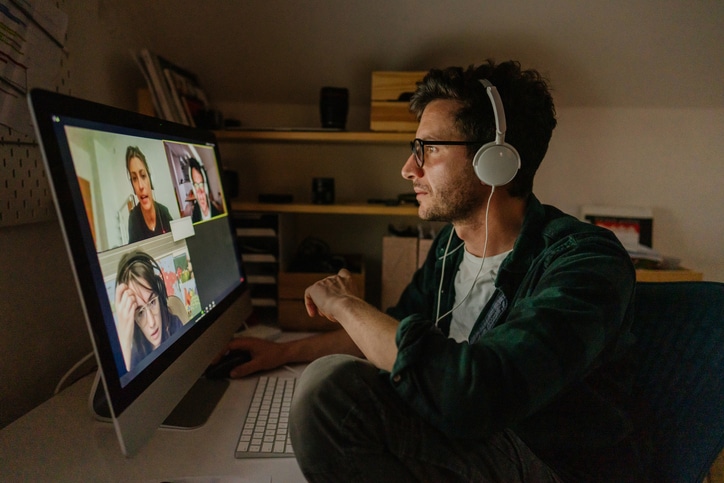Covid-19 has fundamentally changed how (and where) people work. Working from home has already become the new-normal, with a recent Gartner poll indicating that 48% of employees will continue to work remotely in a post-Covid future.
One of today’s biggest challenges accelerated by remote working is a relatively new malady called online (aka Zoom) fatigue, where employees feel overwhelmed by the amount of screen time. This year alone, Zoom saw online meetings swell to more than 300 million daily in April 2020. And online meetings are not slowing down: the market is expected to grow 19% over the next five years.
It is evident that employee wellbeing and engagement is more important than ever and making a few small changes can have a significant impact on job satisfaction and productivity.
This month SAP Concur will have all 8,000 staff members from across the globe have their Outlook meeting defaults reduced from 30 minutes to 25, and from 60 minutes to 50. It might only be a few minutes in between meetings, but research indicates that the brain goes into overdrive when faced with a gallery of faces displayed on a single screen, and this is where breaks of five or ten minutes can go a long way in providing time to unwind, refresh and help improve the employee work experience.
Covid-19, the great work reset
Gartner predicts two parallel trends about the new future of work. One is that some employers will de-humanize their employees, viewing them as dispensable commodities: treated like workers first, and people last. The second scenario is that some organisations will accept greater responsibility in ensuring the physical and mental well-being of their staff and be increasingly engaged in maintaining an outstanding employee experience.
Companies that are committed to creating a great work experience have been shown to outperform their sector peers by as much as 122%, and understanding the triggers of online fatigue, allows them to make empathetic changes to mitigate it.
Here are five tips to help reduce this increasing phenomenon:
- Try text and email first: More than 90% of communication is non-verbal, making traditional face-to-face meetings more conducive for picking up body language cues and tone. But with video-conferencing it becomes more tricky to gauge a person’s disposition, and our minds start burning glucose to try fill in the blanks. This leaves us exhausted.Instead, try communicating by email or text first. If an online meeting is inevitable, encourage people to join with their camera’s off, and their microphones muted unless they need to speak or be seen.
- Share an agenda: If preparation is important for face-to-face meetings, it is even more so for online meetings where distractions can derail attention. Having an agenda will keep a meeting focused. A study has shown that only 23% of people give their complete attention, so staying brief and on point is essential.
- Enforce breaks: Avoid scheduling meetings back-to back. More importantly, take regular breaks with exercise and refreshments to help boost mental energy. As noted above in our new ‘five and ten minutes back’ meeting policy.
- Create sacrosanct blocks of quiet time: These are periods where meetings are actively discouraged. This allows employees to schedule and complete critical tasks without any interruptions. Recent research on working from home shows that 42% of remote workers admitted they were more effective in their tasks if they had longer, distraction-free periods of time available.
- Empower employees to decline when necessary: We’ve all gone into face-to-face meetings where we’ve had other more pressing issues to deal with. In a work-from-home future, employees should feel able to excuse themselves from meetings that clash with the completion of critical tasks, or other urgent priorities.
Off and online, a great employee experience pays
Every business wants happy employees, but every job has administrative and reporting tasks that we simply can’t avoid. In fact, 67% of businesses say that freeing staff from mundane tasks is their top goal. A great Employee Experience benefits the entire organisation. By enabling employees with work-from-home techniques, tips and tools to make virtual meetings and overall admin and reporting more efficient, they’re able to focus their attention on essential tasks without feeling spread thin.



